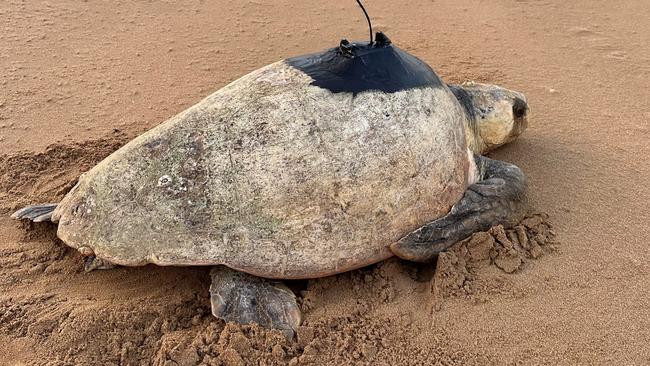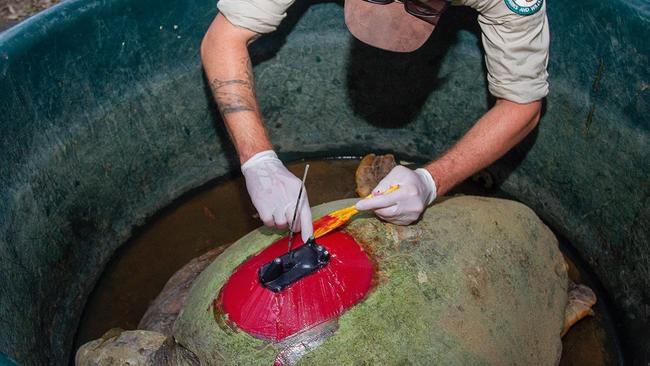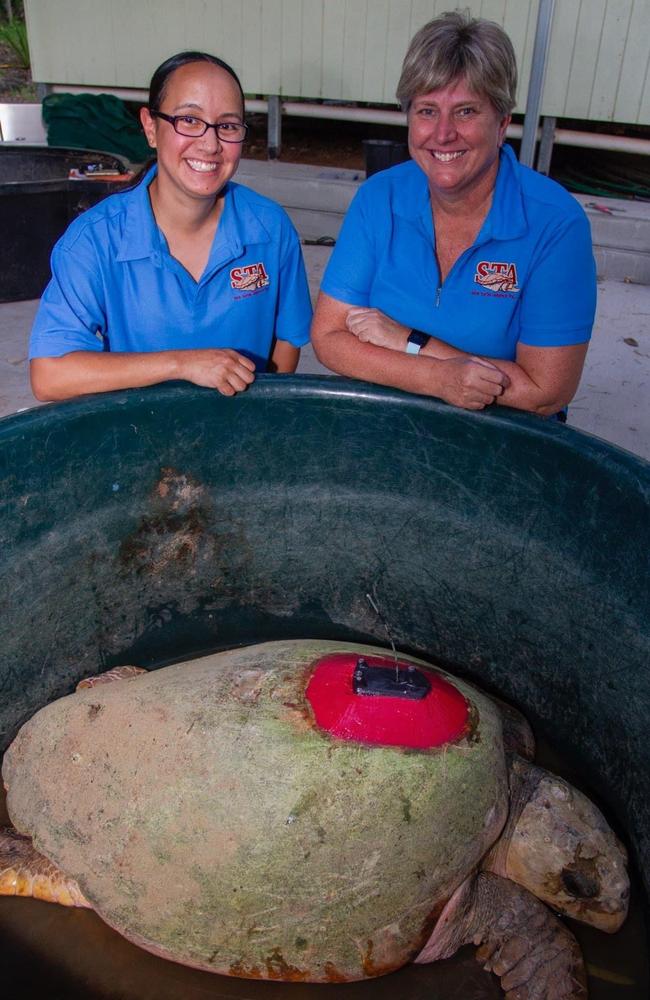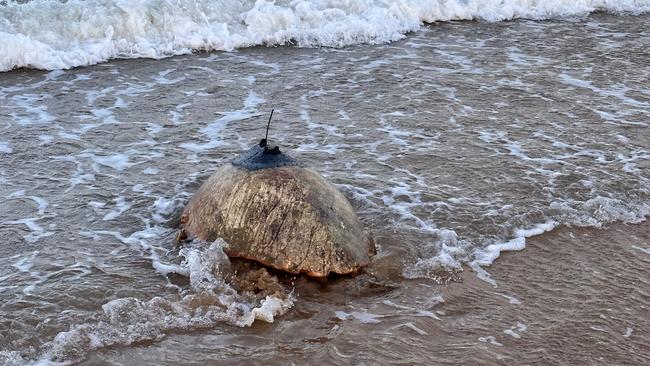Loggerhead turtle tracking project by QLD Parks and Wildlife Service
A female loggerhead turtle that calls the Sandy Strait home but nests at Mon Repos has revealed some of the secrets in the lives of the endangered species.

Gympie
Don't miss out on the headlines from Gympie. Followed categories will be added to My News.
A female loggerhead turtle with a tracking device has exposed the secret lives of the endangered species as they forage and breed off the Wide Bay coast.
The 50-year-old turtle was named “STAr” after the Sea Turtle Alliance, which sponsored the Queensland Parks and Wildlife Service tracking project.
QPWS research officers have discovered the turtle stays local with her foraging ground in the southern Great Sandy Strait and migrates almost the entire length of K’gari (Fraser Island), or 125km, in seven days, a Department of Environment and Science press release said.

The turtle travelled from the Port of Bundaberg to Tin Can Bay from February 5-12, a two and a half hour journey by car.
Mapped: The Gympie region’s 100 mobile black spots
Mon Repos beach near Bundaberg has been the turtle’s nesting ground for the past 20 years, laying 24 clutches of eggs over six breeding seasons in that time.
Son strangles mother’s boyfriend in horrific attack on the Fraser Coast
Mon Repos QPWS ranger in charge Cathy Gatley said in the press release the QPWS “worked closely with volunteers, including the Sea Turtle Alliance, to monitor sea turtles that come to the protected beach to nest”.
“STAr is one of our regular loggerheads seen here at Mon Repos and was a good candidate for receiving a tracker because she’s survived to adulthood and we wanted to know where her safe home feeding ground was located,” Ms Gatley said.

“We’re thankful for the ongoing support from Sea Turtle Alliance, including the sponsorship of STAr’s tracking device, to help inform conservation efforts of our marine turtles.
“We’ve seen migration journeys from places such as Moreton Bay and as far north as the Gulf of Carpentaria, but STAr’s recent movements have been unique in that this is the first time we’ve tracked a turtle migrating home after finishing her nesting, to the southern Sandy Straits.”

Mon Repos holds the largest concentration of nesting marine turtles on the Eastern Australian mainland and has the greatest loggerhead turtle population in the whole South Pacific region, the press release said.
The hatching at Mon Repos is vital for the survival of the endangered species and information from tracking movements help form conservation policies and recovery actions.
Every year between November and March, marine turtles head to Mon Repos to lay their eggs and hatchlings emerge towards the end of the season.




